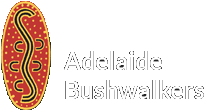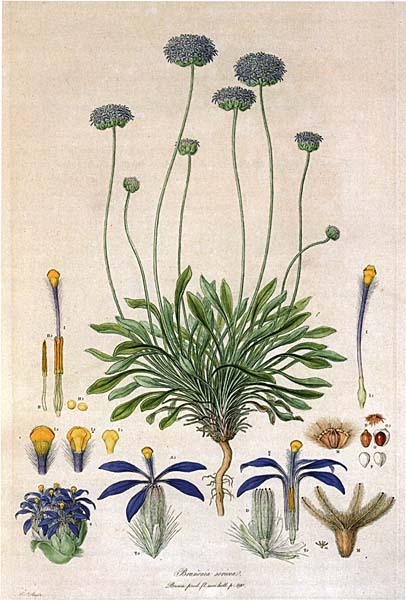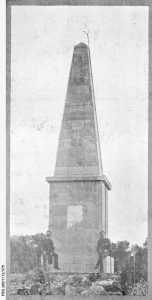Most of us are familiar with the exploits and misfortunes of the brilliant explorer and cartographer Matthews Flinders RN who sadly died in 1814 at the young age of 40.
After being held by the French on Mauritius for 6 years, he finally reached home and his wife in 1810 after having been away for 10 years.
As part of the great voyage of discovery, the Investigator was to chart those parts of Terra Australis (now Australia) not already charted by the Dutch, French, and English including Flinders on earlier journeys.
Flinders’ famous book “A Voyage to Terra Australis” was published a few days before his death. It is generally acknowledged that he was the first person to call our country “AUSTRALIA”.
Some of us in ABW have visited places he discovered, and I decided to record for posterity trips that other members and myself have taken part in.
MOUNT BROWN
Discovering and naming Spencer Gulf, Flinders sailed to the narrowed top of the gulf, sighted a high peak in the lower Flinders Ranges which was climbed by William Westall (artist), Ferdinand Bauer (botanical artist), and Robert Brown. As expedition naturalist, Brown catalogued a vast number of Australian plants. [For those who can dimly recall their high school physics, he is also known for ‘Brownian motion’. Ed.]
From an idea conceived by Life Member David Evans with involvement by myself and a few others, a plaque was installed on the summit of Mount Brown and unveiled on the third of May 1986 during the 150th jubilee of the foundation of South Australia. There’s an excellent report and photo of the event in the ABW’s 50 years commemorative article.
For the unveiling, a special event for ABW was organised and about 48 ABW members were present. The honour of unveiling the plaque was given to Neil Wallace, well known in the club for his drawings in Tandanya.
Since then, numerous ABW parties have visited Mt Brown.
PORT LINCOLN DISTRICT
INVESTIGATOR reached the tip of what is now Eyre Peninsula in February 1802 and several on board including John Thistle went ashore on an island Flinders named Thistle Island.
Mooring the ship at the north end of the island and in need of water, Thistle and seven crew members took a cutter to the mainland. They were never seen again, a tragedy for which Flinders named Cape Catastrophe and Memory Cove.
During Easter 1994, a small group of us flew to Port Lincoln to join club members Bruce and Bonnie Marriott who were living there at the time. With their oceangoing yacht, we sailed to Thistle Island and spent three days there either staying in a cabin on the island or on board the yacht. Thus we were able to learn more about the tragedy and absorb the surroundings of Thistle Island.
In May 2019, Life Member Roger Kempson led a car-camping trip to Lincoln National Park near Port Lincoln [His full report is in the Winter 2019 Tandanya]. We camped in or near Donington Cottage at Cape Donington (named by Flinders after his birthplace). Again, we were able to imagine Flinders being there in 1802.
We climbed Stamford Hill, as did Flinders, and viewed the memorial to Flinders at the summit. This memorial was entrusted to Lady Jane Franklin when she visited South Australia in 1841-42. Her husband Sir John Franklin, a nephew of Flinders sailed on the Investigator when he was a midshipman. By this time he was Lieutenant-Governor of Van Diemen’s Land and namesake of Tasmania’s Franklin River. Later he became known as the leader of the doomed 1845 Northwest Passage expedition.
Also on this trip, we visited Memory Cove, also visited by Flinders which he left with a great deal of sadness.
KANGAROO ISLAND
Flinders reached the north coast of island which he named Kangaroo Island because of the abundance of kangaroos. He never visited its south coast (that was left to the French), but explored much of the east end of the island.
A peak to the north on the mainland he named Mt Lofty.
On a return visit to the island after exploring Gulf St Vincent, Flinders and others climbed Prospect Hill (Mt Thisby) near the isthmus of the island, giving them panoramic views all round. Then on eastwards to a wide bay, and to their surprise met the French ship La Geographe under Nicholas Baudin. Flinders appropriately named the place Encounter Bay.
From here on eastwards, much of coast had been charted by others.
Now, apart from Port Lincoln area and Mt Brown, where has ABW also trod in the footsteps of Matthew Flinders?
Well, we have walked extensively on Yorke Peninsula, Kangaroo Island, Fleurieu Peninsula and Encounter Bay area.
No doubt, many of us would have paused and thought about the exploits and travels of Matthew Flinders.




Comments (0)